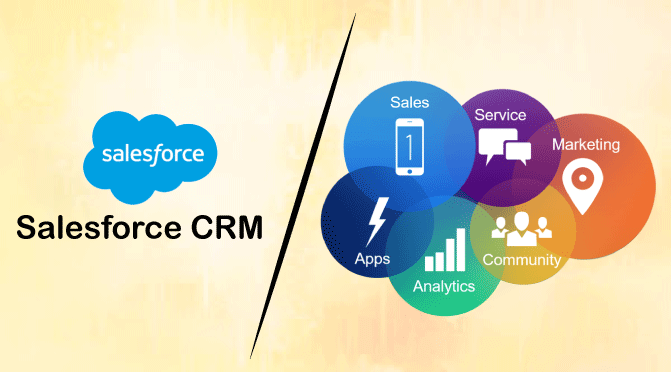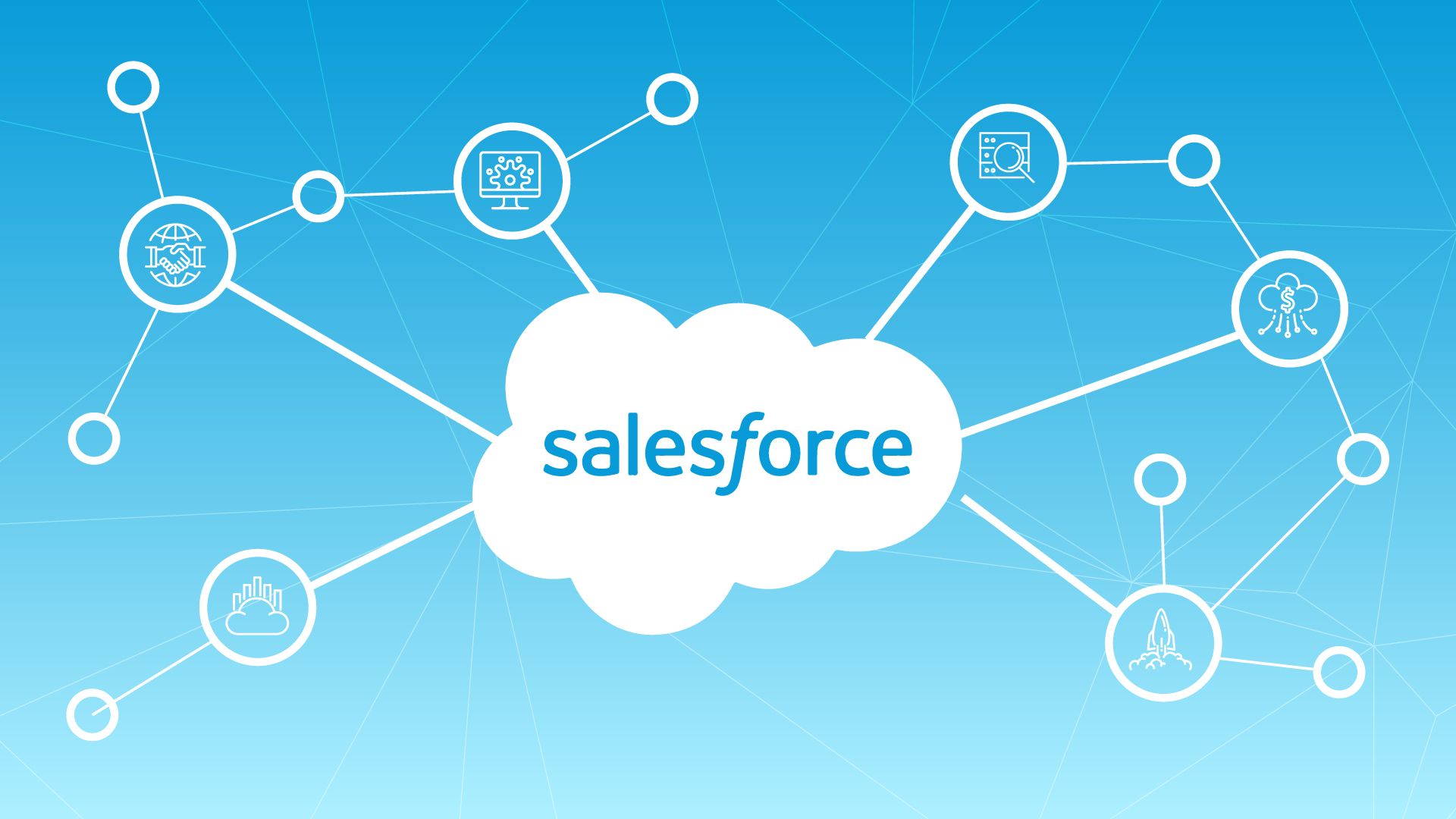Introduction: Your Salesforce CRM, Tailored to Perfection
Taming the Data Vortex: Why Custom Objects Are Your CRM’s Secret Weapon
Imagine your Salesforce CRM as a bustling metropolis, its buildings brimming with information. Standard objects like Accounts, Contacts, and Opportunities form the city’s core, efficiently handling fundamental data points. But what about the unique intricacies of your business, the niche processes and entities that don’t neatly fit into pre-defined structures? This is where custom objects shine, transforming your CRM from a rigid cityscape into a sprawling, bespoke landscape perfectly shaped to your organizational needs.
Beyond the Familiar: Addressing Unique Business Needs

Let’s face it, no two businesses are identical. The intricacies of a real estate brokerage differ vastly from the needs of a healthcare clinic. Yet, both are often forced to squeeze their unique data into the standardized molds of standard Salesforce objects. This leads to a fragmented data landscape, siloed information, and ultimately, missed opportunities.
Custom objects act as architectural marvels, bridging the gap between the generic and the specific. They allow you to create data structures that mirror your exact business processes and entities. Whether you manage complex product lines, intricate partner relationships, or dynamic project portfolios, custom objects provide the flexibility to capture every essential detail, unleashing the full potential of your data.
From Chaos to Clarity: Enhanced Data Organization and Management
Scattered data is like dust bunnies under the couch – an eyesore and a breeding ground for inefficiency. Standard objects often lead to data duplication, inconsistent formats, and fragmented records. This chaos makes it virtually impossible to gain meaningful insights or automate critical processes.
Enter the data management revolution orchestrated by custom objects. By defining dedicated structures for your unique data types, you eliminate redundancy, enforce consistency, and streamline data access. Imagine tracking project milestones, managing partner interactions, or monitoring product lifecycles in a single, organized space. Custom objects bring order to the data chaos, paving the way for efficient processes and unclouded decision-making.
Automation on Autopilot: Boosting Efficiency and Reducing Errors

Repetitive tasks are the bane of any business, draining valuable time and resources. Imagine manually updating progress reports, sending follow-up emails, or generating invoices for every project milestone. Standard Salesforce objects offer limited automation capabilities, leaving you bogged down in manual drudgery.
Custom objects open the door to a world of automated bliss. By integrating workflow triggers and process builders, you can transform tedious tasks into seamless, automatic processes. Think automatic notifications for product updates, triggered email campaigns for partner engagements, or even self-updating progress reports for ongoing projects. Custom objects empower your CRM to take the wheel, freeing you to focus on strategic initiatives and driving business growth.
Demystifying the Data: Gaining Deeper Insights and Driving Data-Driven Decisions
Data is the lifeblood of any successful business, but raw data alone is just a collection of numbers. Standard Salesforce objects provide basic reporting capabilities, but often lack the flexibility to delve into the granular details of your unique data. This leaves you with limited insights and hinders your ability to make informed, data-driven decisions.
Custom objects unlock the treasure trove of insights hidden within your data. By crafting customized reports and dashboards tailored to your specific data structures, you can uncover hidden trends, identify critical performance metrics, and gain a deeper understanding of your business operations. Imagine analyzing partner profitability, tracking project efficiency metrics, or even predicting product demand based on custom data points. With custom objects, your CRM becomes a crystal ball for informed decision-making, propelling your business towards data-driven success.
Unlocking the Potential: Your Tailored CRM Awaits
This guide is your roadmap to a CRM that perfectly reflects your unique business needs. In the following sections, we’ll delve deep into the world of custom object development, equipping you with the knowledge and best practices to:
- Identify your custom object opportunities: Discover the hidden potential within your business processes and data.
- Design and plan your custom objects: Craft the perfect data structures to capture your unique needs.
- Build and implement your custom objects: Master the art of development and deployment, ensuring seamless integration into your CRM.
- Extend the power of custom objects: Leverage integrations, automation, and reporting to unleash your data’s full potential.
- Maintain and optimize your custom objects: Ensure long-term success through continuous improvement and data stewardship.
This is your journey to a tailored CRM, a data-driven powerhouse that perfectly aligns with your business goals and propels you towards sustainable growth. Are you ready to unlock the potential? Let’s dive in!
Understanding Custom Objects: Unveiling the Building Blocks of a Tailored CRM

Beyond the Familiar: Demystifying the Magic of Custom Objects
Now that you’ve glimpsed the transformative power of custom objects, let’s embark on a deeper exploration of their essence. Imagine them as Lego bricks, each representing a unique data point, waiting to be assembled into intricate structures that perfectly reflect your business needs. Understanding their types, functionalities, and potential will empower you to become a master architect of your data landscape.
Unveiling the Essence: What are Custom Objects?
Think of custom objects as the missing pieces in your Salesforce puzzle. They are user-defined entities that extend the platform’s capabilities beyond standard objects, allowing you to capture and manage data specific to your business processes. Whether it’s tracking complex product configurations, managing intricate grant programs, or monitoring partner performance, custom objects provide the flexibility to mold your CRM to your unique needs.
Imagine a real estate agency struggling to manage diverse property types within the limitations of standard objects. Custom objects for “Luxury Apartments” or “Historic Estates” can capture unique data points like architectural styles, amenities, and target demographics, providing a holistic view of each property and streamlining sales processes. Similarly, a non-profit organization managing grants can utilize custom objects for “Research Grants” or “Community Outreach Initiatives” to track project milestones, funding sources, and impact metrics, ensuring efficient program execution and reporting.
Building Bridges: The Power of Relationships
Custom objects don’t exist in isolation. They form a dynamic ecosystem, interconnected through various relationships:
- Master-detail relationships: Imagine a company structure with departments, teams, and employees. A “Department” object can be the master, with “Team” and “Employee” objects as child entities linked to it. This hierarchical structure allows you to analyze performance by department, track team dynamics, and manage employee information efficiently.
- Lookup relationships: Think of a university with courses, students, and instructors. A “Student” object can link to multiple “Course” objects they’re enrolled in, while “Course” objects can reference instructors and other relevant details. This avoids data duplication and facilitates cross-referencing for enhanced insights.
Tailor-Made Data: Custom Fields and Beyond
Standard objects offer pre-defined fields, but what about capturing information unique to your business? Custom objects allow you to define your own fields like “Product Features” for a technology company, “Grant Scope” for a non-profit, or “Partner Risk Profile” for a financial institution. This granular data capture unlocks deeper insights and enables customized reporting specific to your needs.
To ensure data accuracy and streamline processes, custom objects offer additional tools:
- Validation rules: Set parameters to ensure data integrity, like requiring a minimum budget for projects or restricting partner classifications to specific criteria.
- Workflow triggers: Automate actions based on specific events, such as sending notification emails upon grant approval or generating reports when project milestones are completed.
Exploring the Spectrum: Types of Custom Objects
The world of custom objects is diverse, offering options to fit your specific needs:
Standard custom objects: These are your go-to for capturing data unique to your business, like product lines, project types, or partner categories.
- Enhanced custom objects: These offer advanced features like field history tracking and hierarchical relationships for complex data structures.
- External objects: These integrate data from external systems into your Salesforce environment, creating a unified data hub for seamless collaboration.
Conclusion: Unleashing the Potential
Understanding custom objects paves the way for a CRM tailored to your unique needs. In the following sections, we’ll delve deeper into:
- Defining your custom object needs: Identify the data gaps and processes that can be empowered by custom objects.
- Designing and planning your custom objects: Craft the perfect data structures with relationships, fields, and functionalities.
- Building and implementing your custom objects: Master the development and deployment process for seamless integration.
Custom objects are not just data structures; they are the foundation of a data-driven, efficient, and perfectly tailored CRM. With the knowledge and best practices you’ll gain, you’ll be equipped to transform your Salesforce into a powerful engine for growth and success.
Defining Your Custom Object Needs: Building the Blueprint for a Tailored CRM
Now that you’ve unlocked the secrets of custom objects, it’s time to embark on the exciting journey of identifying and defining your unique needs. Imagine your CRM as a blank canvas, waiting to be splashed with the vibrant colors of your specific data structures. This section will guide you through the process of crafting the perfect blueprint, ensuring your custom objects are not just functional, but impactful drivers of growth and efficiency.
Unearthing the Gems: Analyzing Current Processes and Data Gaps
Your first step is akin to an archaeologist unearthing hidden treasures. Take a deep dive into your current business processes, scrutinizing each step and data point. Ask yourself:
- Where are we relying on workarounds or manual processes due to limitations of standard objects?
- What unique data points are we missing or struggling to capture effectively?
- Are there recurring tasks or data duplication that could be streamlined with custom objects?
Think beyond the obvious. A manufacturing company might identify a need for custom objects to track raw material batches, product testing results, and specific client requirements. A marketing agency might realize they need custom objects for campaign performance metrics, influencer collaborations, and content creation workflows. Remember, the goal is to identify opportunities for improvement and automation through custom objects.
Gazing into the Crystal Ball: Considering Future Needs and Growth
While it’s crucial to address current challenges, don’t neglect your future vision. Consider your growth plans and strategic goals. Ask yourself:
- What new data points or processes will emerge as we expand our business?
- How can custom objects be designed to support scalability and future integrations?
- Are there any industry trends or technological advancements that might influence our data needs?
A growing e-commerce company might anticipate the need for custom objects to track product seasonality, loyalty programs, and personalized recommendations. A healthcare organization might envision custom objects for managing patient cohorts, treatment protocols, and real-time monitoring data. By planning for the future, you can ensure your custom objects remain relevant and adaptable as your business evolves.
Prioritizing the Pearls: Impact and Complexity
Not all needs are created equal. To make informed decisions, prioritize your identified opportunities based on their potential impact and complexity:
- High impact, low complexity: These are your low-hanging fruit, offering significant benefits with minimal development effort. Focus on these first to reap quick wins and build momentum.
- High impact, high complexity: These require careful planning and development, but can unlock transformative results. Prioritize them based on their strategic importance and allocate resources accordingly.
- Low impact, low complexity: These might be helpful but not essential. Consider deferring them or implementing them as smaller, incremental improvements.
By prioritizing your needs, you can ensure your resources are directed towards the most impactful custom objects and avoid wasting time on less significant projects.
Crafting the Masterpiece: Design and Planning
With your needs identified and prioritized, it’s time to translate them into a tangible blueprint. This is where the artistry of design comes into play:
- Object names: Choose clear and descriptive names that accurately reflect the data they represent. Avoid generic terms and ensure consistency with your existing naming conventions.
- Fields and relationships: Define the specific data points you want to capture for each object. Consider relationships with other objects to create a connected data ecosystem. Remember, the right balance of detail and conciseness is key.
- Validation rules and workflow triggers: Establish data integrity by setting validation rules for field values. Automate repetitive tasks and streamline processes with well-designed workflow triggers.
- User permissions and access levels: Determine who needs access to different objects and fields, ensuring data security and preventing unauthorized modifications.
Remember, designing custom objects is an iterative process. Don’t be afraid to refine your plans based on feedback and testing. The goal is to create a blueprint that is comprehensive, efficient, and perfectly aligned with your business needs.
Conclusion: Building a Brighter Future
By investing time and effort into defining your custom object needs, you are laying the foundation for a brighter future. In the next sections, we’ll delve deeper into the practical aspects of:
- Building and implementing your custom objects: Learn the development and deployment process for seamless integration into your CRM.
- Extending the power of custom objects: Explore integrations, automation, and reporting to unlock the full potential of your data.
- Maintaining and optimizing your custom objects: Ensure long-term success through continuous improvement and data stewardship.
Custom objects are not just technical tools; they are the bridge between your unique business needs and a data-driven, efficient CRM that propels you towards sustainable growth. By following the steps outlined in this section, you’ll be well well equipped to embark on the exciting journey of building and implementing your custom objects. As you navigate development and deployment, remember, meticulous planning is your compass. Embrace ongoing learning and adapt your custom objects as your business evolves, ensuring they remain the dynamic drivers of efficiency and growth they were designed to be. Ultimately, custom objects are more than just tools; they are the lifeblood of a thriving CRM, pulsating with the unique needs of your organization. By investing in their creation and nurturing them with continuous improvement, you unlock the full potential of your data and pave the way for a future brimming with success.”
Building Your Custom Objects: Translating Blueprint into Reality
With your blueprint meticulously crafted, it’s time to transform it into the living, breathing entities that will power your CRM. This is where the art of development takes center stage, and you have two key tools at your disposal:
- Salesforce Lightning App Builder: This visual drag-and-drop interface is perfect for building basic custom objects. Imagine it as a Lego set, where you can easily connect predefined blocks (fields and relationships) to create your desired structures. Suitable for straightforward objects, it offers a user-friendly and efficient way to bring your design to life.
- Apex code: For complex custom objects with intricate functionality or unique data structures, Apex code becomes your paintbrush. This programming language allows you to unleash your creativity and paint custom experiences directly onto your CRM canvas. While requiring technical expertise, Apex unlocks a world of possibilities for advanced objects that truly push the boundaries of what your CRM can do.
Harmony in the Details: Best Practices for Seamless Integration
Remember, your custom objects should not be isolated islands in your CRM landscape. To ensure seamless integration and user adoption, follow these best practices:
- Naming conventions: Clarity is key. Maintain consistent and descriptive naming for objects, fields, and relationships. Think of them as road signs, guiding users effortlessly through your data landscape.
- Field labels and help text: Don’t leave users guessing. Use clear and concise labels for your fields, and consider adding helpful text that provides context and guidance. Remember, every bit of clarity translates to a smoother and more efficient user experience.
- User interface design: Make it visually appealing and easy to navigate. Consider the layout and organization of your fields, buttons, and links to optimize data entry and interaction. Think of it as designing a user-friendly room where everyone can access and utilize the information effortlessly.
Testing and Deployment: From Sandbox to Reality
Building your custom objects is only half the story. To ensure a smooth transition into your live environment, follow these crucial steps:
- Sandbox testing: Don’t release untested objects into the wild. Utilize Salesforce’s sandbox environments to rigorously test your creations, identifying and fixing any bugs or glitches before they impact real users.
- Phased roll-out: Don’t overwhelm your users. Consider a phased roll-out, introducing your custom objects to smaller groups first to gather feedback and refine them before widespread adoption. Think of it as a controlled launch party, ensuring everyone is comfortable and excited before the grand opening.
Conclusion: Building a Thriving CRM Ecosystem
By mastering the art of building and implementing your custom objects, you’ve taken a giant leap towards a thriving CRM ecosystem. In the next sections, we’ll explore:
- Extending the power of custom objects: Leverage integrations, automation, and reporting to unlock the full potential of your data.
- Maintaining and optimizing your custom objects: Ensure long-term success through continuous improvement and data stewardship.
Building custom objects is not a one-time event; it’s an ongoing journey of evolution and optimization. By following these steps and continuously nurturing your data ecosystem, you can ensure your CRM remains a powerful engine for growth and success.
Extending the Power of Custom Objects : Unlocking a Data Galaxy
Your custom objects are the stars in your CRM constellation – shining bright with unique data points that fuel your business processes . But their true brilliance lies in their ability to connect and collaborate with other celestial bodies in your data galaxy . Let us explore how to extend their power through integrations and automation to unveil deeper insights and drive data – driven decisions .
Connecting the Dots : Integrations and Automation
Imagine your custom object “Project Portfolio ” seamlessly integrating with “Marketing Campaigns ” and “Financial Forecasts”. This interconnectedness is the magic of integrations . Connect custom objects with other Salesforce features like Pardot or external applications like project management tools . Automate data workflows to break down silos and streamline processes . Think automatic updates on project budgets in financial forecasts , or triggering marketing campaigns based on project milestones . By removing manual data entry and repetitive tasks , you unleash efficiency and accuracy , propelling your CRM to new heights .
Visualizing the Cosmos : Process Builders and Flows
Creating complex automation workflows can feel like navigating a tangled nebula . But fear not , Salesforce has your back with visual tools like Process Builders and Flows . These drag – and – drop interfaces allow you to design automated actions without writing a single line of code . Imagine automatically assigning team members to projects based on skill sets , or sending follow – up emails upon missed deadlines . With these intuitive tools , even novice users can become automation wizards , empowering your custom objects to work tirelessly for you .
Decoding the Data : Reporting and Analytics
Data is the raw fuel that powers your business , but without the right tools , it remains a swirling vortex of confusion . Custom objects shine here , allowing you to generate reports and dashboards specifically tailored to their unique data points . Imagine analyzing project profitability , tracking partner engagement metrics , or even predicting product demand based on custom data . These insights become your guiding stars , illuminating the path to data – driven decisions that optimize your business operations and propel you towards sustainable growth .
Conclusion : Journey into a Data – Driven Future
By leveraging integrations , automation , and reporting , you unlock the true potential of your custom objects , transforming them into powerful engines that drive efficiency , insights , and data – driven decisions . In the next section , we chart the course for continuous improvement through :
- Maintaining and optimizing your custom objects : Ensuring long – term success through data stewardship and ongoing refinement .
Remember , your custom objects are not just data structures ; they are the beating heart of a thriving CRM . By nurturing them with integrations , automation , and reporting , you embark on a journey into a data – driven future , where your business shines as the brightest star in the galaxy .
Maintaining and Optimizing Custom Objects: Ensuring Long-Term Brilliance
Your custom objects are thriving stars in your data galaxy, but like any celestial body, they need regular care and maintenance to maintain their brilliance. Let’s explore the key practices for ensuring their long-term effectiveness and preventing them from becoming data black holes.
Regular Reviews: Keeping Your Stars Aligned
Just as astronomers monitor the cosmos, regularly evaluate your custom object usage and effectiveness. Ask yourself:
- Are they still fulfilling their intended purpose?
- Have data needs evolved, requiring adjustments to fields or relationships?
- Are workflows and automation rules still optimized?
By continuously assessing your custom objects and making necessary updates, you prevent them from becoming outdated or irrelevant, ensuring they remain aligned with your evolving business needs.
Version Control and Backups: Protecting Your Data Galaxy
Data loss can be a cosmic catastrophe. To safeguard your information, maintain a clear version history for your custom objects, allowing you to track changes and revert to previous versions if necessary. Additionally, implement regular backups to ensure you have a failsafe in case of unexpected events.
Conclusion: A Perpetual Journey of Data Evolution
Maintaining and optimizing your custom objects is not a one-time endeavor; it’s a perpetual journey of data evolution. By embracing these practices, you ensure your custom objects remain beacons of efficiency and insight, propelling your CRM towards a future where data shines as your guiding light.
Conclusion
The development of custom objects within Salesforce CRM is a pivotal step toward tailoring the platform to meet the unique needs of your business. By leveraging custom objects, organizations can design and implement data structures that precisely align with their processes and objectives.
The flexibility afforded by Salesforce CRM’s custom object development empowers businesses to capture and manage specific information integral to their operations. This not only enhances data organization but also facilitates more informed decision-making. The ability to create relationships between custom objects further enriches data connectivity, providing a comprehensive view of business interactions and relationships.
Moreover, Salesforce CRM’s robust suite of tools for custom object development streamlines the process, allowing for efficient customization without extensive coding expertise. This ease of use ensures that businesses can adapt and evolve their CRM systems in tandem with changing requirements.
As businesses evolve, so too can their Salesforce CRM instances through the continuous refinement and expansion of custom objects. This adaptability positions organizations to stay ahead in a dynamic business landscape, maximizing the potential of Salesforce CRM for sustained growth and success. In essence, Salesforce CRM custom object development is not just a feature; it’s a strategic imperative for businesses aiming to harness the full power of Salesforce for their unique needs.







